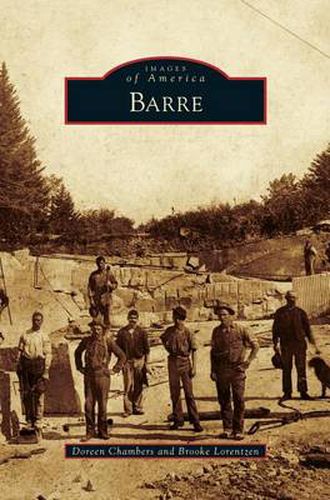Readings Newsletter
Become a Readings Member to make your shopping experience even easier.
Sign in or sign up for free!
You’re not far away from qualifying for FREE standard shipping within Australia
You’ve qualified for FREE standard shipping within Australia
The cart is loading…






This title is printed to order. This book may have been self-published. If so, we cannot guarantee the quality of the content. In the main most books will have gone through the editing process however some may not. We therefore suggest that you be aware of this before ordering this book. If in doubt check either the author or publisher’s details as we are unable to accept any returns unless they are faulty. Please contact us if you have any questions.
In 1788, the first settlers were drawn to the region of central Vermont now known as Barre by the area’s 19,900 acres of rolling hills and valleys and its granite, water, forest, and fertile soil. The industrial growth of Barre depended on these resources. The Stevens Branch stream gave life to a number of mills, manufacturing companies, and granite-polishing works. Joshua Thwing built the first grain mill, and William Moorcroft started the first woolen mill to manufacture white flannel. The granite business began developing in 1812 and grew to be the chief industry in town, bringing immigrants from around the world to work in the quarries and sheds. One such settler was William Foster Milne, who arrived in 1907 and went on to organize the first Boy Scout troop in America. Today, visitors come from all over the world to visit the Rock of Ages Visitors’ Center and quarry tour, Hope Cemetery, the Barre Opera House, Thunder Road SpeedBowl, and the Vermont Granite Museum.
$9.00 standard shipping within Australia
FREE standard shipping within Australia for orders over $100.00
Express & International shipping calculated at checkout
This title is printed to order. This book may have been self-published. If so, we cannot guarantee the quality of the content. In the main most books will have gone through the editing process however some may not. We therefore suggest that you be aware of this before ordering this book. If in doubt check either the author or publisher’s details as we are unable to accept any returns unless they are faulty. Please contact us if you have any questions.
In 1788, the first settlers were drawn to the region of central Vermont now known as Barre by the area’s 19,900 acres of rolling hills and valleys and its granite, water, forest, and fertile soil. The industrial growth of Barre depended on these resources. The Stevens Branch stream gave life to a number of mills, manufacturing companies, and granite-polishing works. Joshua Thwing built the first grain mill, and William Moorcroft started the first woolen mill to manufacture white flannel. The granite business began developing in 1812 and grew to be the chief industry in town, bringing immigrants from around the world to work in the quarries and sheds. One such settler was William Foster Milne, who arrived in 1907 and went on to organize the first Boy Scout troop in America. Today, visitors come from all over the world to visit the Rock of Ages Visitors’ Center and quarry tour, Hope Cemetery, the Barre Opera House, Thunder Road SpeedBowl, and the Vermont Granite Museum.